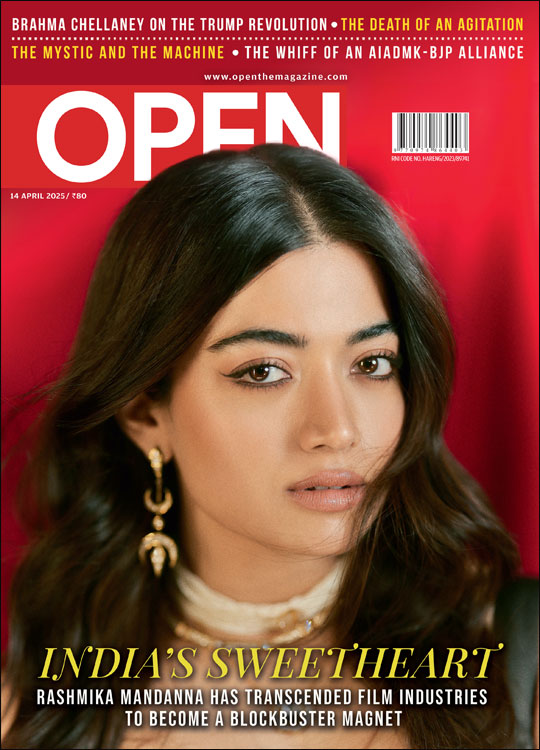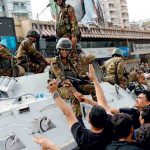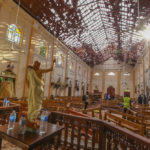The Fall of Nawaz Sharif
The story of Nawaz Sharif’s rise and fall is the story of contemporary Pakistan. For him, it matters little if it is the Army or the Court. History has moved in circles for him and yet another uncertain phase of his political career begins
/wp-content/uploads/2017/08/Pause1.jpg)
On July 29th, Pakistan’s disqualified Prime Minister Nawaz Sharif addressed the parliamentarians of his party. Sullen faced and visibly hurt, Sharif elaborated his ordeal in recent months, the charges of corruption and the flawed reasoning of the supreme court that led to his third-time dismissal. In a ramble that lasted for nearly an hour, regurgitating platitudes in chaste Urdu, Sharif spent a few seconds on being a nazariyati (ideological) politician. To his credit, he admitted that he was not like that twenty or twenty-five years ago, but his political career had made him so.
The use of the term ‘ideological’ in politics has been the preserve of the left and the right wing, and therefore a centrist politician identifying himself as such was intriguing to say the least. Nawaz Sharif’s evolution into a politician with a peculiar worldview is what has contributed to his dismissal—and this time, by a court.
Nawaz Sharif has the singular distinction of being elected thrice and getting removed from the office by the permanent institutions of the state. In 1993, he was fired by the powerful president, restored by the court and then asked to leave by the army chief. In 1999, another army chief, General Musharraf, overthrew his government through a coup d’état and later exiled him. Nawaz bounced back, but in 2017, the Supreme Court of Pakistan disqualified him as he had not declared an asset—an income that he never received but still an asset according to Black law Dictionary. All three times, he could not complete his constitutional tenure of five years as the prime minister of Pakistan.
The story of Nawaz Sharif’s rise and fall is the story of contemporary Pakistan. Its authoritarian and conservative politics, the dynamics of urbanisation, the quest for a democratic polity; and the struggle for civilian control of state policies. It is also the story of an undocumented, elitist economy where crony capitalism has shaped politics and social order.
Nawaz Sharif, the shy son of a Lahore entrepreneur Mian Sharif, was picked up by General Ghulam Jilani Khan who headed the powerful Inter-Services Intelligence (ISI) in the 1970s and was the right-hand man of General Zia ul-Haq who ruled the country from 1977 to 1988. Jilani served as the Martial Law Administrator and Governor of Pakistan’s largest and politically significant province of Punjab from 1980 to 1985. During this period, Sharif’s ascension to power—first as a finance minister and then as the province’s chief minister—was central to the political engineering under military rule. The key object of this military project was to counter the widely popular Pakistan People’s Party (PPP) that had been thrown out of power and to create a new class of politicians who were both loyal to the military and also used patronage as an express instrument of political consolidation. Bhutto’s PPP had won the Punjab province in 1970 on an ideological platform of redistributive justice and socialism. The time for such politics was over.
The novice Sharif therefore was the blue-eyed boy of the military establishment and he delivered in terms of consolidating all anti-PPP forces and vote banks through the 1980s. Such was his intimacy with the dictator General Zia that the latter called Sharif his ‘son’ in public and just as Mughal ruler Babar had prayed for his son Humayun, wished that meri umar bhi inn ko lag jaye. Zia’s wish was granted as he soon died in an aeroplane crash. Sharif and his family were among the mourners, for they had benefitted tremendously under this spell of military rule. Bhutto had nationalised their industries, which were returned to them after the 1977 coup, and proximity to Pakistan’s arbitrary economic policy processes ensured that their business not only came back on track but expanded manifold. However, the Sharifs were not the only beneficiaries of this largesse. Many other feudal and industrial families prospered. The most commonly used mechanism was to draw hefty loans from state-owned banks and then get them waived or rescheduled, thereby giving them an advantage over their competitors.
At the end of 2016, Sharif appointed a new army chief. So the civil and military players coped with a new, albeit perennially tense, relationship
Since 1958, the military in Pakistan had started to rule directly, and other than a few years under Bhutto, its control over the polity was supreme. After Zia’s death in 1988, elections returned the still-popular Pakistan People’s Party now led by Benazir Bhutto. But the establishment could not afford the PPP’s return in Punjab province. Therefore, a coalition called the Islami Jamhoori Ittehad (IJI) was cobbled together by the then head of ISI with express support of the army chief and the country’s President Ishaq Khan. Nawaz Sharif was the right man available at the right time.
Benazir Bhutto’s party obtained a simple majority in Pakistan’s National Assembly. Elections to the provincial assembly were held a day later, and through the election cycle a calculated campaign was orchestrated to invoke Punjabi nationalist passions by pitching Nawaz, a Punjabi, against Benazir, a Sindhi. There were allegations of electoral manipulation and ultimately Nawaz Sharif returned as chief minister of Punjab for the second time. Other than being hailed as a Ranjit Singh reincarnation by propagandists, his primary aim was to give Benazir a tough time and not let her govern. (Decades later, Imran Khan did the same to Sharif’s third tenure.) Benazir could not last for more than 20 months when President Ishaq Khan dismissed her government in August 1990. During her brief tenure, she introduced some social programmes such as the Lady Health Workers network and also made peace overtures to India. The Indian Prime Minister then, Rajiv Gandhi, visited Islamabad for the SAARC summit and the two popular dynasts struck a cordial note. The Siachen issue was discussed, and according to diplomats on both sides, a proposal to end that tension was agreed upon. Benazir’s overtures were found to be unacceptable by the military and right-wing parties, including Nawaz Sharif’s, and Benazir was branded an Indian agent as well as a security risk.
The elections of 1990 were held in a highly charged environment and the establishment made full preparations to defeat her. A private bank was used as a funnel to distribute funds to opposition politicians (through a presidential cell), including Sharif, for the election campaign. This was a major scandal then, and later in 2012, Pakistan’s supreme court established the facts and even suggested action against the then army and ISI chief. That decision is yet to be implemented.
Elaborate electoral engineering and media outrage against Benazir and her husband Asif Ali Zardari resulted in the defeat of the PPP at the polls (which had been fixed). The opposition alliance IJI won and the military got its favourite boy to the throne of Islamabad. Sharif was sworn in as prime minister and he ruled for the next three years. By now, Sharif had a decade-long experience, a vast network of clients in the Punjab province as well as a substantial pool of loyal bureaucrats. During his stints as the chief executive of Punjab province, he had already taken several development initiatives for roads and other large-scale infrastructure projects. As prime minister, he announced the development of a motorway between Lahore and Islamabad—in the heartland of Punjab province. This major project highlighted his vision of development for Pakistan. As a businessman, he understood the importance of infrastructure. Some say he even fancied himself as a reincarnation of Sher Shah Suri, the 16th century ruler of India who built the Grand Trunk Road and modernised its administrative structures in medieval times. But the Mughal manner was not limited to grand development projects. Sharif also developed a style of governance that was akin to a royal darbar comprising a kitchen cabinet and loyal bureaucrats at the expense of cabinet responsibility and parliamentary processes. Even though his politics evolved, his approach to decision-making remained pretty much the same. But this did not dent his growing popularity as rulers are viewed as kings by a populace colonised for centuries and later ruled by autocratic regimes after 1947.
Since Pakistan’s inception, Sharif was the first successful leader from Punjab and his stature had grown beyond the initial estimation of his benefactors. This was also the time when he realised the necessity to exercise civilian authority where the cabinet and prime minister could work with independence and not as second fiddles to the establishment. During his three years as prime minister, Sharif experienced the limits of civilian power in the domains of foreign policy, appointment of army chiefs and undertaking of constitutional changes to empower the Prime Minister’s office.
Differences between Sharif and President Ishaq Khan—the civilian face of the establishment—grew and led to a situation where Sharif was advised to resign. Instead of agreeing to the diktat, Sharif appeared on the state-run TV channel and uttered these historic words in April 1993: “I will not resign. I will not dissolve parliament and I will not take dictation from anybody.” Sharif showed a side that the establishment had perhaps not predicted in the preceding 12 years. His government was dismissed nevertheless. The president alleged ‘maladministration, corruption, nepotism and espousal of political violence’ as reasons to dissolve the assemblies. (Three years earlier, Ishaq Khan had dismissed Benazir Bhutto’s government on the charges of ‘rampant corruption, nepotism, misuse of resources and banks for political ends and for personal gains’.)
Sharif’s daughter and heir apparent, Maryam Sharif, was accused of falsifying documents to mislead the Panama Papers investigation
Sharif went to the Supreme Court of Pakistan for redress and the bench with a majority of Punjabi judges gave him relief and in May decreed that the president had acted unlawfully. The wily president struck back and created a constitutional crisis, leading to the direct intervention of the army that forced both the president and ‘restored’ Prime Minister Sharif to resign. A fresh election returned Benazir Bhutto to power. Once again, this was to be an ill-fated rule, as Benazir’s trusted ally whom she got elected as the president, Farooq Leghari, dismissed her government in 1996.
Another election returned Sharif to office with a thumping majority in the National Assembly.
The second tenure of Sharif proved to be as rocky as the first. This time, however, he played his hand well and managed to replace the president and chief justice and dismiss an army chief who suggested the creation of a national security council. Sharif also amended the constitution, curtailing the powers of the president to dismiss assemblies.
Drunk on amassed power, Sharif acted recklessly in many ways. He attempted to muzzle the press, was tough with the opposition, especially Benazir, who left the country to avoid persecution. Her husband Asif Ali Zardari, however, remained imprisoned under charges of corruption (that were never proved).
A stronger Nawaz had also started to assert his power in the realm of foreign policy. In February 1999, nearly eight months after nuclear tests by archrivals India and Pakistan, Sharif invited then Indian Prime Minister AB Vajpayee for a summit in Lahore. At that occasion, the two countries launched a bus-service across the Wagah border and Vajpayee made the inaugural journey from New Delhi to Lahore. During the two-day summit, both leaders conducted indepth negotiations on a host of contentious issues. At the end of the summit, the Lahore Declaration was announced. It called for bilateral cooperation for peace and stability in South Asia. Both governments vowed to avoid war and focus on dialogue to resolve outstanding issues, including Jammu & Kashmir. In a symbolic gesture, Vajpayee visited the Minar-e-Pakistan (the place where the Lahore Resolution of 1940 was passed by Jinnah’s Muslim League) and acknowledged the existence of Pakistan as a reality. This was an unprecedented moment after the 1965 and 1971 wars. Peace seemed like a possibility.
While the naïve Sharif was engaged in peace-building efforts, Pakistani troops on the directions of Army Chief General Pervez Musharraf had occupied peaks in the remote Kargil region of Kashmir. As summer ensued, in May 1999, the Indian Army discovered that Pakistani units had occupied posts across the Line of Control. India launched a counter-offence. Sharif maintains that Pakistan’s army launched the military operation without his authorisation. General Musharraf, on the contrary, claims the action had the blessings of the political leadership. The Kargil War continued for two months. As casualties rose, a spectre of wider conflict increased. Sharif dashed to Washington to seek the intervention of US President Bill Clinton. This led to a ceasefire, as Pakistan agreed to withdraw its remaining troops.
Nawaz Sharif has bounced back in the past, but today’s Pakistan is young, impetuous and impatient for change and getting rid of the old political order
The Pakistan army blamed Sharif for accepting the withdrawal of troops and the military losses. General Musharraf held that militarily Pakistan was gaining ground but lost politically. Months of tension between the two culminated in the fateful coup of October 12th, 1999. Sharif ordered the removal of General Musharraf and appointment of General Ziauddin Butt as the new army chief. However, the military high command refused to accept these orders, and in turn, toppled the civilian government.
The coup was not just the end of Sharif’s government but resulted in his imprisonment, trials and exile. He stayed in Saudi Arabia and London until his return to Pakistan in 2007 when General Musharraf’s rule was challenged through a popular movement of Pakistani lawyers and civil society. This was also the year of Benazir Bhutto’s return and assassination.
By now Sharif was an older, jaded leader with a different worldview. In 2006, he signed the Charter of Democracy with his rival Benazir, whereby they agreed not to repeat the history of the 1990s and avoid playing with the establishment for short term goals. Sharif was clearer about the civilian ascendancy in political governance and firmly wedded to the vision of opening regional trade and making peace with India.
In 2008, free elections were finally held that Benazir’s party, now led by her husband Zardari, won. Nawaz Sharif’s party, the Pakistan Muslim League (Nawaz), took part in the elections and managed to revive its electoral base in Punjab. His party also won the province’s election and his brother became its chief minister for the second time. The biggest issue for the new government was the restoration of Pakistan’s chief justice whom General Musharraf had deposed. Noting that this was his chance of leveraging influence with state institutions, Sharif ended up leading a long march in 2009, which was finally stopped by the intervention of the army chief, and the chief justice was reinstated.
By and large, Sharif played by the book with the federal government. Both parties led a major constitutional reform in which many amendments inserted by military dictators were removed. Powers were devolved and the bar on anyone becoming prime minister for a third term was also dropped. However, Sharif opposed the removal of clauses on eligibility of parliamentarians. These articles were amended under General Zia citing vague religious references to set their eligibility criteria. Ironically, Sharif has been disqualified under these very clauses by the apex court.
The PPP government remained hostage to an aggressive chief justice, a powerful military and ISI, and regional hostilities with India and Afghanistan. Even though Sharif and Zardari hatched little plots against each other, the pact with Bhutto stayed intact.
The discovery and assassination of Osama bin Laden in May 2011 created a new moment of instability and national shame. Sharif was critical of the army and made his position clear quite a few times on its support to militancy. It is instructive that in the 1990s he had received the alleged support of Bin Laden. But a decade later, he was no supporter of Al Qaeda.
But civil-military tensions, as always, existed. The army had taken a policy decision to retreat after the anti-Musharraf protests. There was little appetite for military rule. But it still guarded its say in foreign policy, especially when it came to the US and India. Things heated all through 2011, leading to the spectacle of memogate. In the fall of 2011, a memorandum addressed to then US JCS Admiral Mullen, allegedly drafted by Pakistan’s ambassador Husain Haqqani, was leaked. It called for help from the Obama administration to avert a military coup and take charge of the national security structure should there be such a coup in Pakistan. It was also alleged President Zardari was involved in this affair. Under pressure from the army, opposition and media, the PPP government recalled ambassador Haqqani, who was forced to tender his resignation. The opposition and media called for a high-powered judicial investigation into the memo affair, and its aftermath. Sharif petitioned the supreme court to set up a judicial commission to investigate the matter. Sharif himself appeared in court to pressure the government. He also threatened that his party would resign from parliament if the matter was not urgently investigated. Meanwhile, the military and intelligence chiefs submitted affidavits authenticating the existence of the memo and a conspiracy against the national security of Pakistan.
Perhaps Sharif was trying to mend fences with the military establishment. The elections of 2013 returned him to power. His party won an absolute majority and formed the government. His brother’s rule in Punjab was viewed as pro-development and the Sharifs invested heavily in urban transport. Lahore had a metro bus for the first time. The agenda resonated with the urban population of Punjab and the mercantile business lobbies had been their allies since the 1990s. Pakistan is South Asia’s fastest urbanising country and more than half of Punjab’s people live in urban conditions. Brand Nawaz caters to the aspirations of these voters. And a patronage network built by Nawaz Sharif over 30 years had made him a formidable political player—greater than what the military had anticipated in the 1980s. Nawaz Sharif and his family are expressly religious, and so unlike the liberal PPP, they also attracted the attention of the conservative middle-class. Some of Sharif’s allies were also in bed with religious extremists for electoral benefits. In Pakistan, as in other parts of South Asia, religion works for political gains.
In his third tenure as prime minister, much as Sharif was willing to play along, two decades of mistrust and his personal beef with his tormentor General Musharraf landed him early into conflict with the military. Sharif’s government prosecuted General Musharraf for treason and violation of the constitution in 2007 (by imposing an emergency). Many of his aides reportedly advised him against the move, but Sharif was inclined to settle some scores. General Musharraf was indicted in early 2014. While being taken to a court for his appearance as an accused, his convoy was diverted to a military hospital ostensibly on account of a medical condition he had developed.
It was clear that the military would not let its former chief be tried in a civilian court. In any case, this was a first in Pakistan’s history and from that point onwards, the civil-military relations only worsened. The opposition leader Imran Khan had alleged rigging in the 2013 elections. A year later, Khan started a major protest and for months his supporters occupied the federal capital city of Islamabad, bringing the Sharif government to a state of paralysis. Later, the chairman of Khan’s party parted ways and accused him of plotting with the military through a few retired officials to overthrow Sharif’s government. Khan himself asked the army chief to intervene, but the military as an institution was not too keen to strike. It was enough that for months Sharif had been considerably weakened.
A judicial commission was set up and it could not establish that there had been rigging. A crisis was averted, but it returned with another showdown between Sharif and the military in 2016.
In early October 2016, the Dawn reported details of an exclusive meeting between the civilian leadership and military principals where the former apprised military officials about the increasing international pressure for more action against militant groups. Civilians contended that Pakistan could face isolation internationally if the government and military did not change course. The publication of this report stirred a hornet’s nest and strained the civil-military relationship even further. Sharif was forced to remove his trusted advisor and order a high-powered investigation into the leak. The probe held two more officials responsible and the prime minister took action against them. However, the military deemed the action as insufficient and ‘rejected’ the notification of the prime minister’s office. Tensions spiked again. After two weeks, the military withdrew its objection and acquiesced to Sharif’s earlier action.
The baggage that Sharif carried with him was too difficult for the hawks in civil society and some within the military to accept. When Indian Prime Minister Narendra Modi invited SAARC leaders to attend his swearing-in ceremony, Sharif did not hesitate to visit Delhi. Modi also came to Pakistan and attended a Sharif family celebration at his Lahore residence. The opposition as well as sections of media criticised these meetings. And Sharif was painted as a security risk on social media, with a terrible slogan— ‘Modi Ka Jo Yaar Hai, Gaddaar Hai, Gaddaar Hai’—employed even by liberal PPP supporters at rallies.
The irony could not have been more bitter. Two decades ago, Sharif had called Benazir a security risk. Now he was one.
For years, Sharif has proposed a crudely defined but new national security doctrine that envisions a ‘peaceful neighbourhood’ and ‘conflict avoidance’ with the enemy India. Hawks in Pakistan are opposed to any change in the India-centric national security doctrine, which seeks to contest growing Indian influence in the region. After the Kargil War and his second ouster, Sharif had vowed to initiate an inquiry into that conflict that brought nuclear-armed India and Pakistan on the verge of an all-out war.
After coming to power in 2013, Sharif disassociated with the idea of establishing a high-powered Kargil commission. But had he given up on the notion altogether? It is doubtful. On the environmentally calamitous India-Pakistan stand-off at Siachen glacier, Sharif advocated a unilateral withdrawal to resolve the dispute. The military, however, has supported talks that resolve the dispute and lead to withdrawal. (It is the Indian military which now resists any settlement.)
Sharif has also supported commencing bilateral trade with India. Sections of business lobbyists and media—and more importantly the military—oppose this. Their contention is that the resolution of the Kashmir dispute should precede trade with India. Sharif has been asking for gradual normalisation on the possibility that the enmity could be reduced and negotiations on Kashmir would offer a way forward.
The popularity of Sharif in Pakistan’s most populous province, Punjab, also the army’s recruitment ground since colonial times, tosses things up. Sharif had challenged the anti-India consensus built by Bhutto in the late 1960s and early 1970s in Punjab province. People voted for Sharif, despite his views on India and his being viewed as a threat to the conventional national security doctrine that places the Indian threat right on top of the list.
In his third term, Sharif also surprised his critics by speaking of a liberal Pakistan, amending laws to favour minorities and supporting pro-women legislation. His appearances at Hindu and Christian festivals indicated that this was a different man from his previous persona. Perhaps this was also the result of his daughter Maryam’s influence who became active in the PM House and ran an effective media cell to promote her father’s party and counter propaganda by the opposition (which included pro-army social media activists).
In 2014, a Peshawar school was attacked by the Taliban that killed more than 148 children and teachers. The country was shaken and the army chief General Raheel Sharif emerged as a counter-terrorism leader. His actions later were effective in reducing militancy through 2015, but an aggressive media campaign painted him as a hero at the expense of the elected government, especially the prime minister. The military also encroached on internal security and took over the functions of provincial law and order coordination. The public, tired of terror attacks, by and large supported the army’s moves. Nawaz Sharif was criticised for not doing enough. Sharif dealt with this tricky situation, but the tensions often spilled into the media. The military’s ability to project an image of itself was enhanced by the rise of social media.
Maryam’s media cell vigorously and sometimes crudely fought her father’s combats. This also annoyed the military and her media management became a topic of national TV debates, inviting criticism from journalists and opinion leaders considered close to the military.
General Raheel’s popularity resulted in many calls for giving him an extension. Sharif did not budge. At the end of 2016, he appointed a new army chief using his discretionary powers as Pakistan’s prime minister. So the civil and military players coped with a new, albeit perennially tense, relationship.
And then the Panama crisis erupted.
In April 2016, the International Consortium of Investigative Journalists (ICIJ) released the Panama Papers that revealed murky financial dealings of the world’s most powerful political players, including Prime Minister Sharif of Pakistan. The data revealed offshore holding of the Sharif family, particularly the ownership of five expensive residential properties in London.
In Pakistan, the Panama leaks triggered a political storm. Sharif and his family members sought to downplay it, contending their businesses dated back decades. The opposition, however, sought a judicial inquiry into the assets and wealth of the Sharif family. After months of political wrangling, in October, Imran Khan threatened a lockdown of Islamabad to force the government to commence a judicial inquiry. As political tensions escalated and violence ensued, the supreme court intervened. It constituted a special bench to examine the Panama Papers and asked the Sharifs to establish ownership of the said residential properties and provide a money trail. Hearings continued for months. In April 2017, the supreme court, in a divided verdict, constituted a joint investigative team (JIT), comprising members of civilian anti-graft, investigative and corporate bodies and representatives of military-led intelligence agencies.
The JIT composition was widely questioned for the inclusion of spooks. That also increased the mistrust between Sharif and the military leadership—the government and investigative team exchanged accusations during the two months of its probe. Some investigators accused the Intelligence Bureau, the principal civilian intelligence outfit, of harassing JIT members. The government speculated that military intelligence agencies had gone the extra mile to support the JIT. Nonetheless, the probe involved summoning members of the Sharif family, including him and his daughter Maryam Nawaz, the heir apparent, for interviews.
On July 10th, the JIT submitted its report to the apex court. It was subsequently made public. In the report, it alleged that Sharif was the beneficiary owner of the London properties, and he was also the owner of an offshore firm in Dubai, which he had not declared in his annual tax returns. Maryam was also accused of falsifying documents to mislead the investigation. The JIT held that the Sharif family had failed to establish a money trail for the London properties. In a nutshell, the JIT report accused the Sharifs of ‘living beyond their known sources of income’.
Sharif and his closest aides claimed that a conspiracy was afoot to target him and his family. Alongside the JIT proceedings, a media trial continued to inform and build public opinion against him. The courts were not immune to what was being said on television. On July 28th, a five-member bench of the supreme court referred the corruption allegations to the national accountability bureau, but chose to disqualify Sharif on a technicality that entailed not declaring an ‘unreceived’ income.
Pakistan has been polarised between the urban professional classes that control public narratives and the hardcore voter base of Nawaz Sharif. The former think that this disqualification was long due and the latter are more concerned with Sharif’s development agenda. The media is polarised too and journalists have been attacking one another. In this environment and under the pressure of public opinion, it is unlikely that Sharif’s ouster was engineered by the military. The Panama leaks were not the handiwork of the establishment, even though they have helped achieve its goal of keeping the expansion of civilian power in check.
For Sharif, it matters little if it is the Army or the Court. History has moved in circles for him and yet another uncertain phase of his political career has commenced. Having said that, his career is not over. Not yet. He has bounced back in the past, but that was a different Pakistan. Today’s Pakistan is young, impetuous and impatient for change and getting rid of the old political order.
Nawaz Sharif, however, is clear about where he stands. He was never as clear about his ‘ideology’—civilian supremacy in a nutshell—as he is today. Pakistan has certainly taken a step backward and the decade-long investment in the democratic process runs the risk of being squandered.
About The Author
CURRENT ISSUE
Rashmika Mandanna: India’s Sweetheart
MOst Popular
4

/wp-content/uploads/2025/04/Cover-Rashmika-New.jpg)














More Columns
The New Hotspot Kaveree Bamzai
Chills and Spills in Small Town America Kaveree Bamzai
Power Play on a Global Scale Kaveree Bamzai